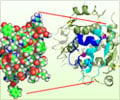Glossary
Lipoatrophy: Loss of fat tissue in specific locations. Usually occurs as a result of subcutaneous injections of insulin in the treatment of diabetes.Nanoparticle: Particles of the size ranging from 1 to 100 nanometers are called nanoparticles. A particle is a whole unit with respect to its transport and properties.
Polymer: A substance with a molecular structure built with a multiple units of similar molecules bonded together. For example, polyester is the multiple units of ester bonded together.
Biodegradable: A substance that can be decomposed by the action of biological agents like bacteria.
Nanoporous membrane: Membranes that have pores with diameters in the range of nanometers and sub-nanometers.
Hydrogels: A group of polymeric materials that attract water and can hold large amounts of water in their network of polymeric chains.
Permeability: The rate of flow of a liquid or gas through a porous material is called permeability of the material.
Porosity: Porosity is a measure of the space available between the molecules of a material.
Parenteral administration: Intake of a drug or medicine in the form of an injection or infusion. Commonly injections are administered into a vein (intravenous), under the skin (subcutaneous) and into muscle (intramuscular). Infusions are given via the veins.
Intestinal motility: Contractions in the intestine to facilitate the movement of the food particles refers to intestinal motility.
Epicutaneous: On the skin. The term epicutaneous refers to intake of medicines or other materials into the skin by shallow piercing with small-gauge needles.






